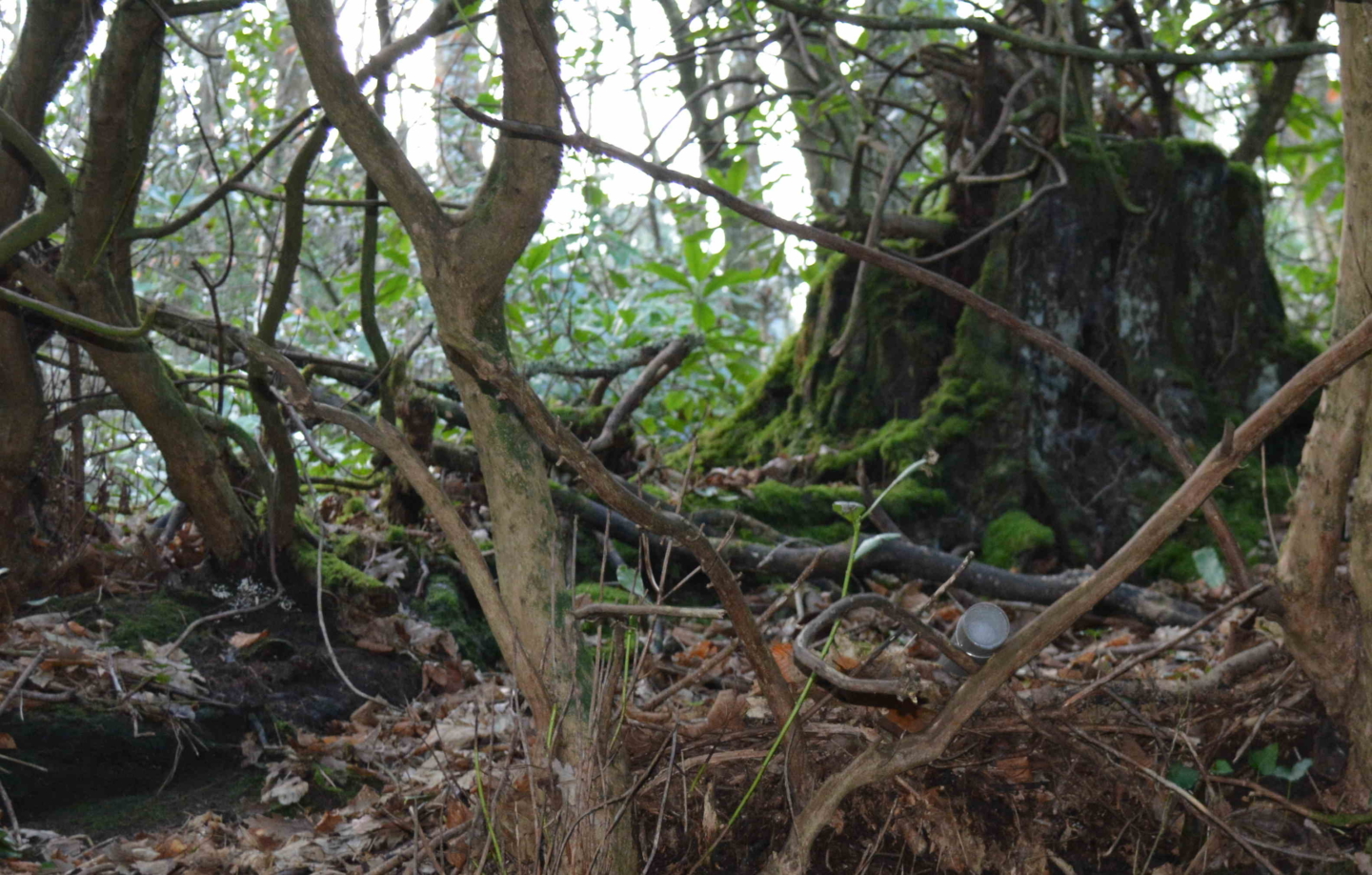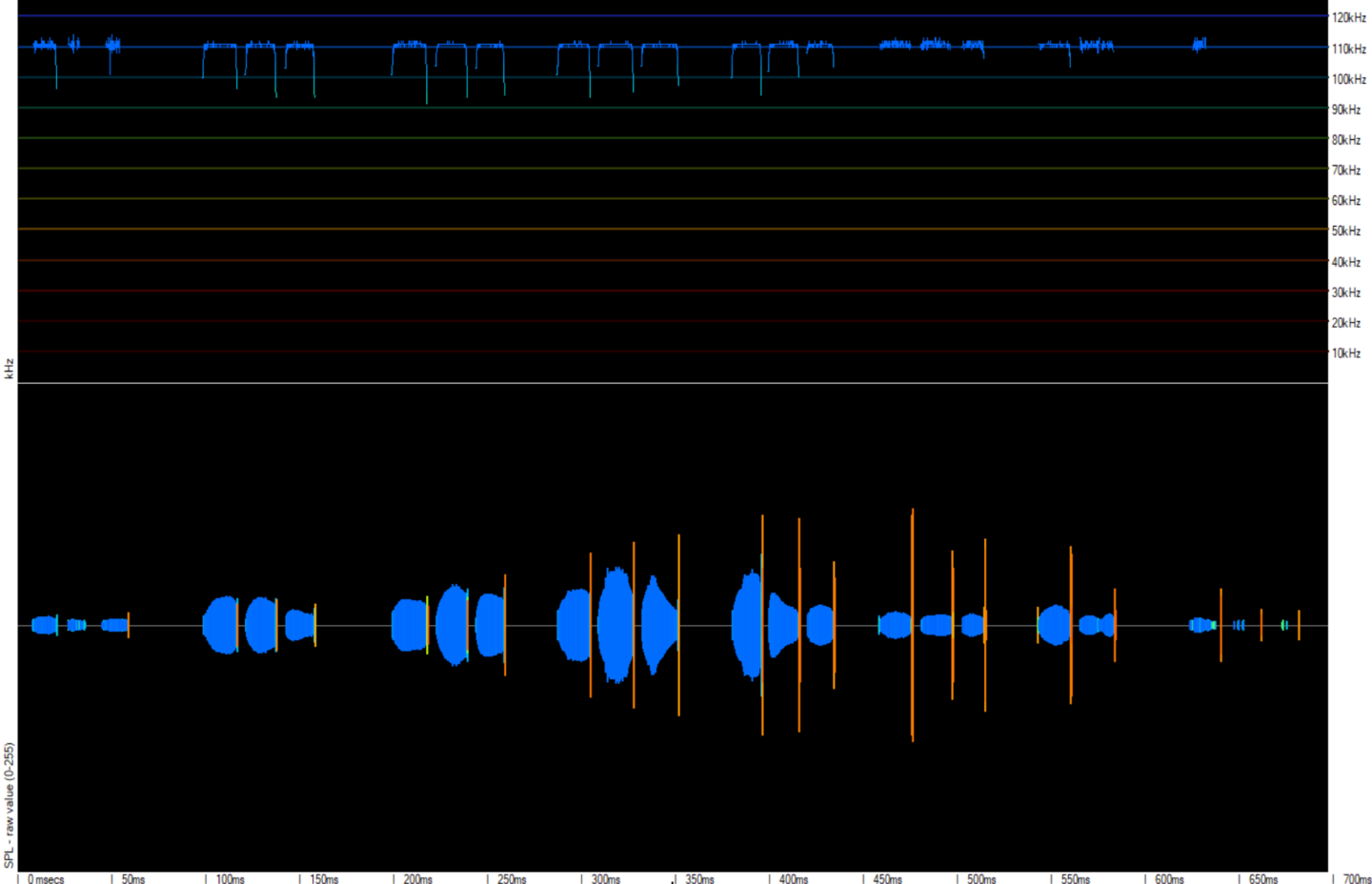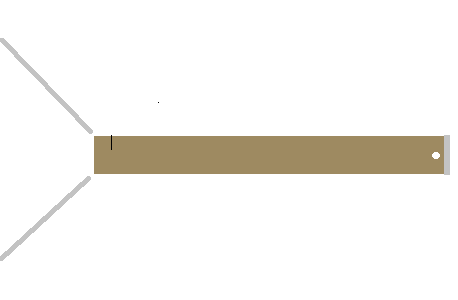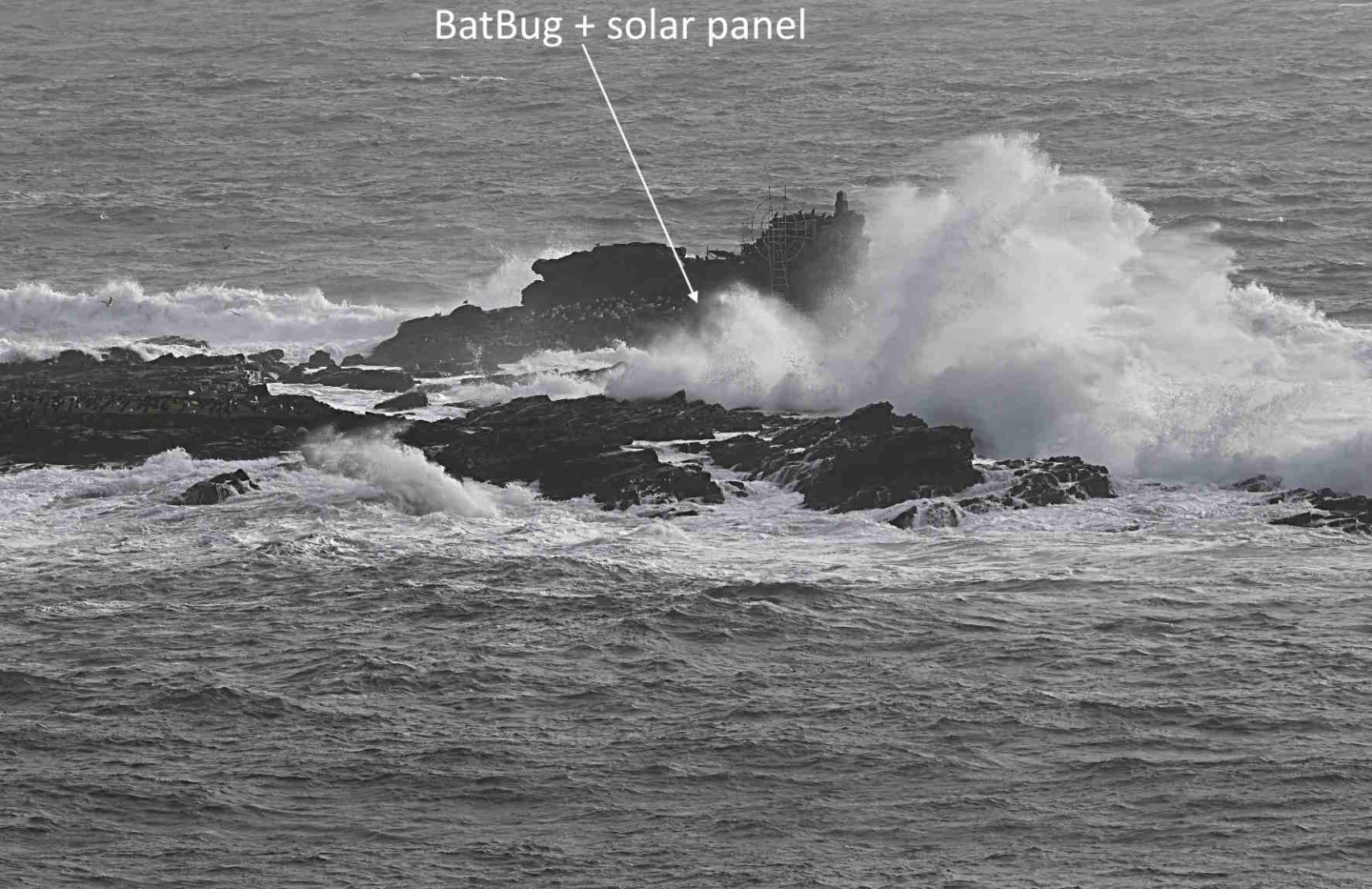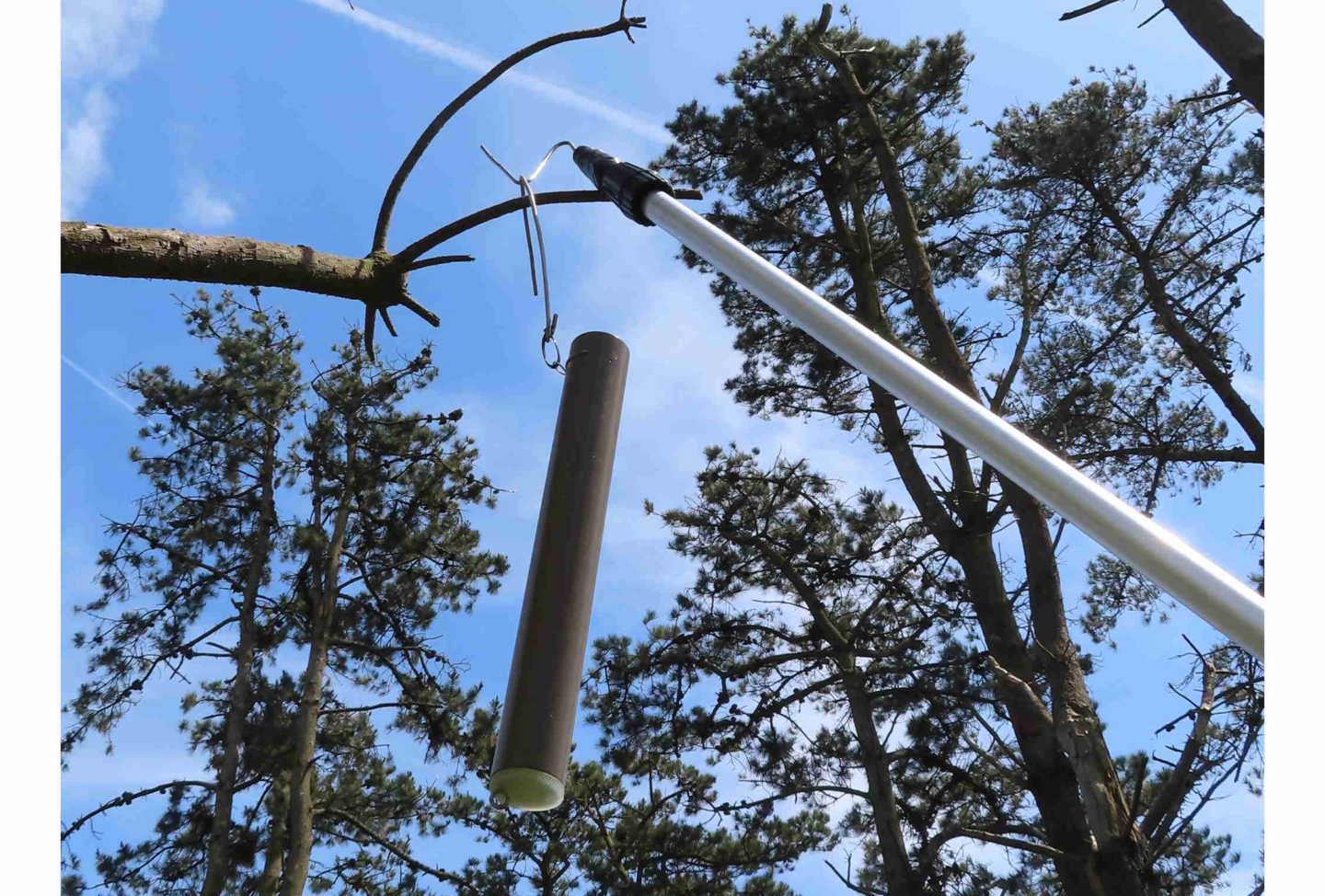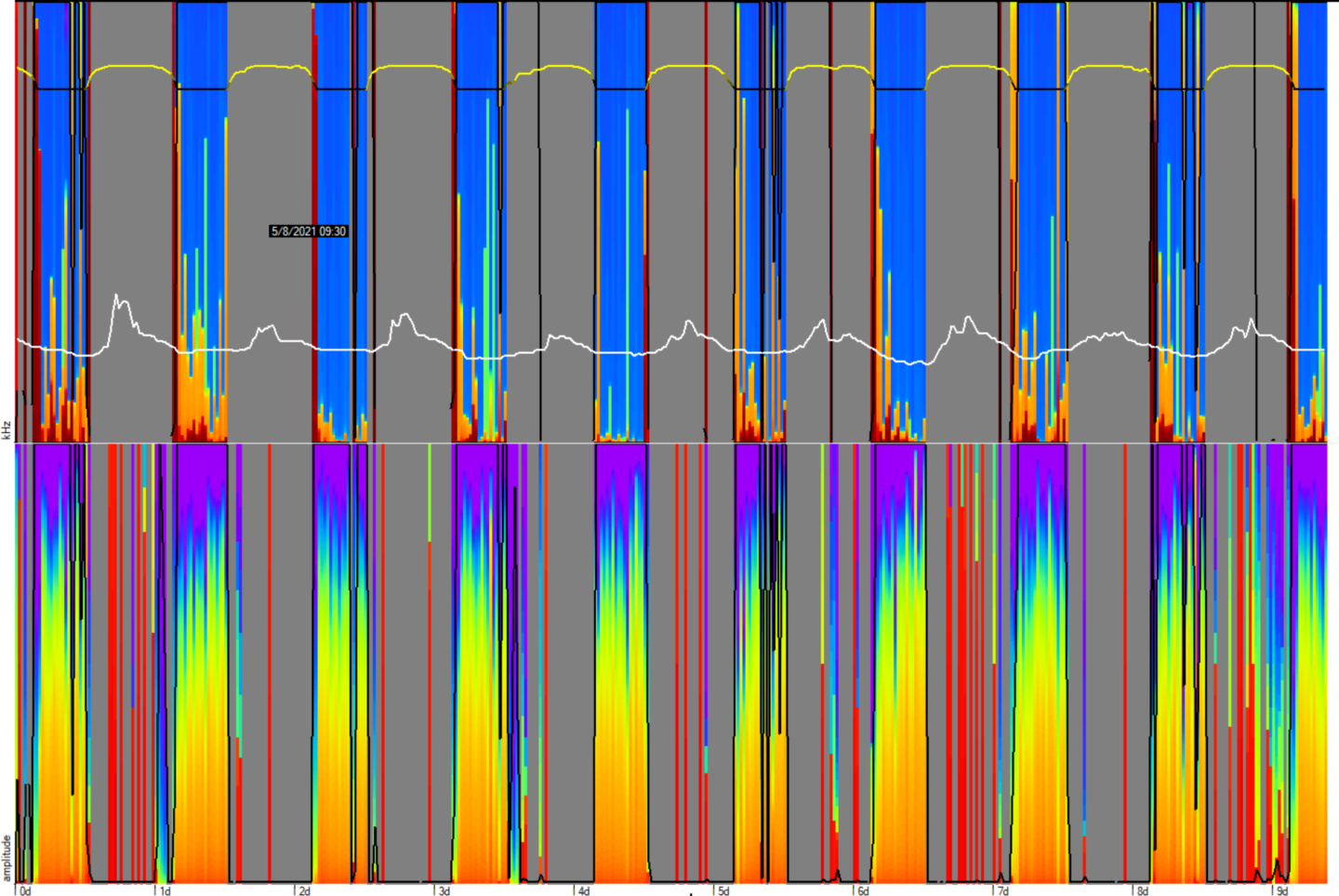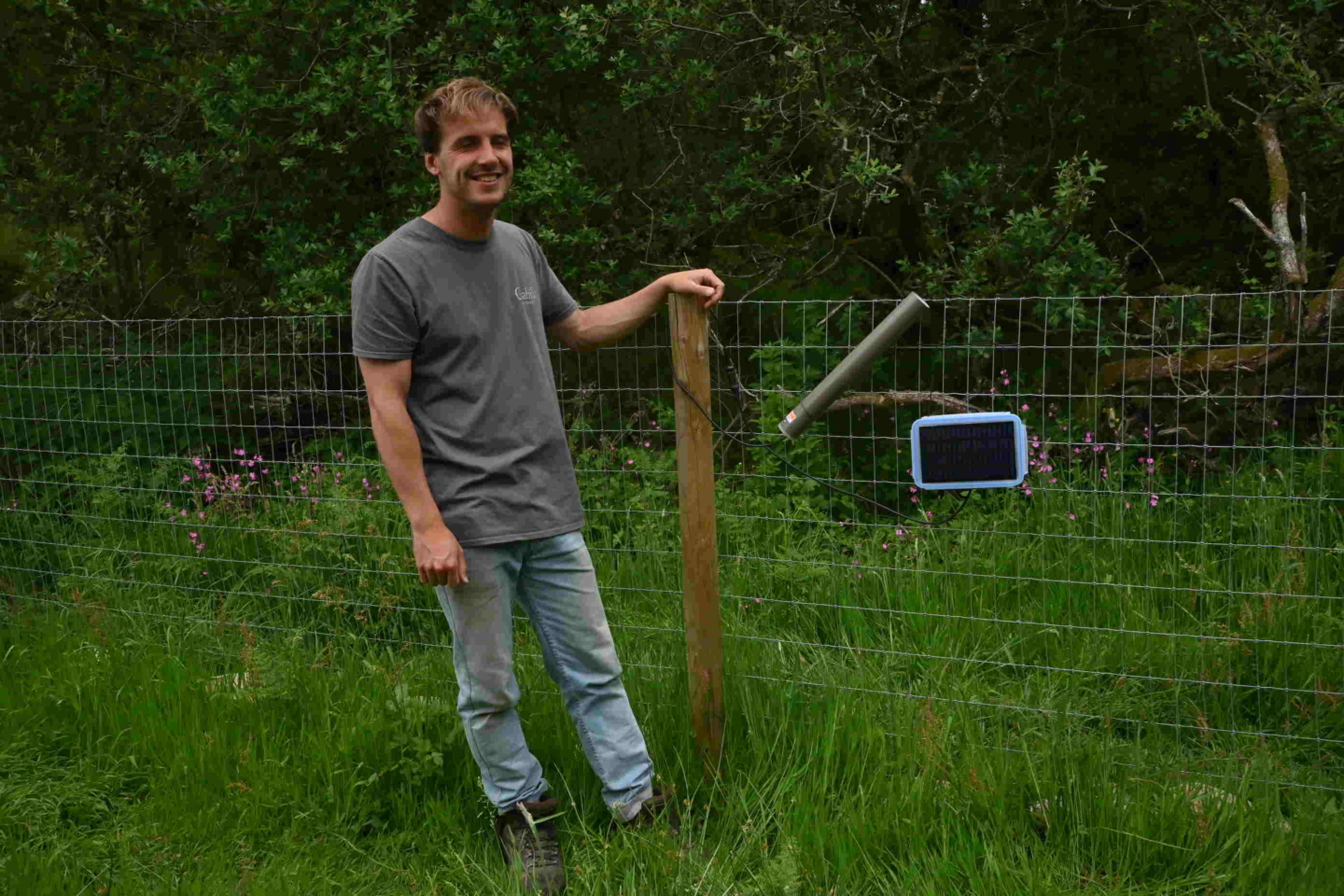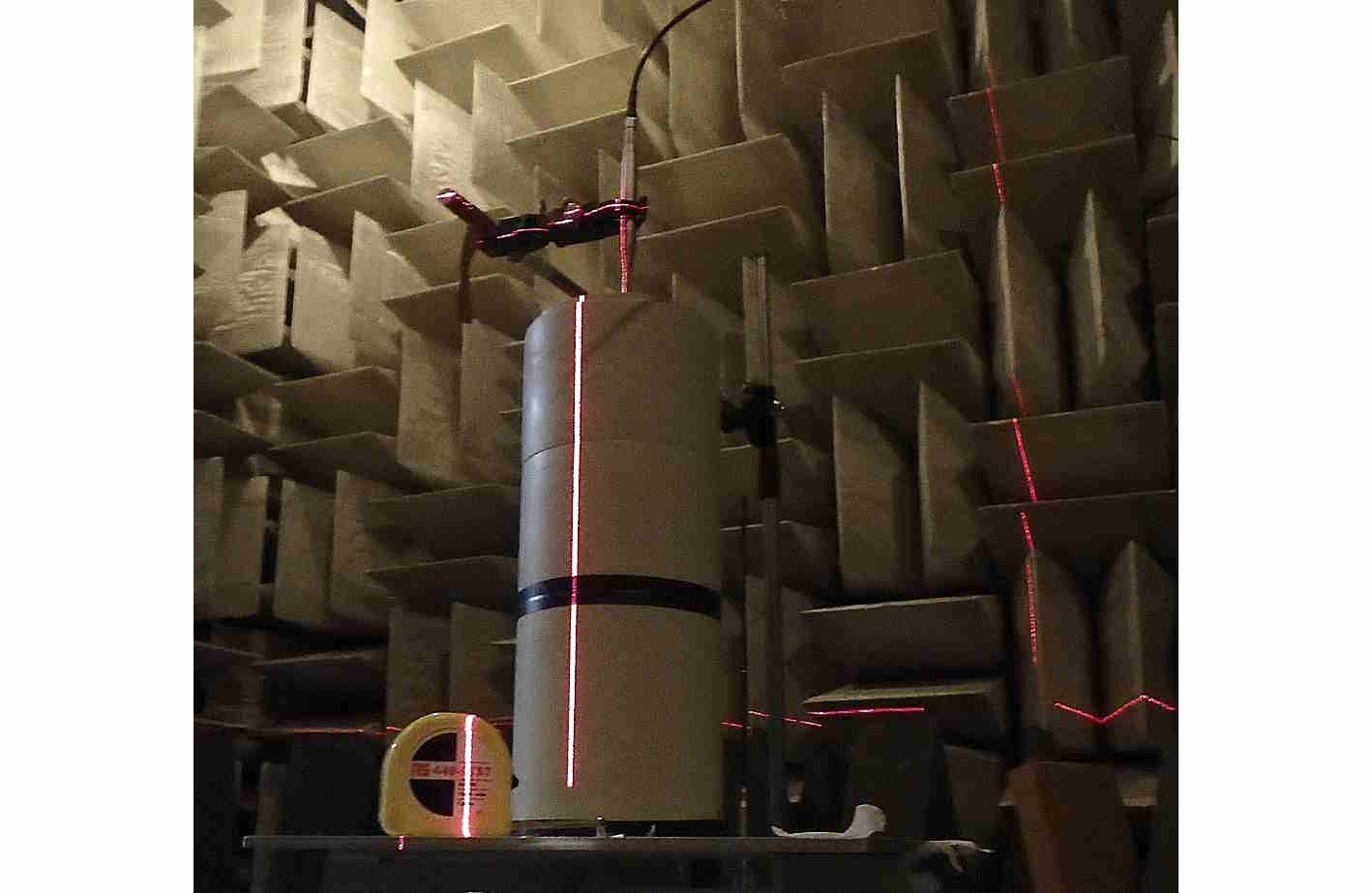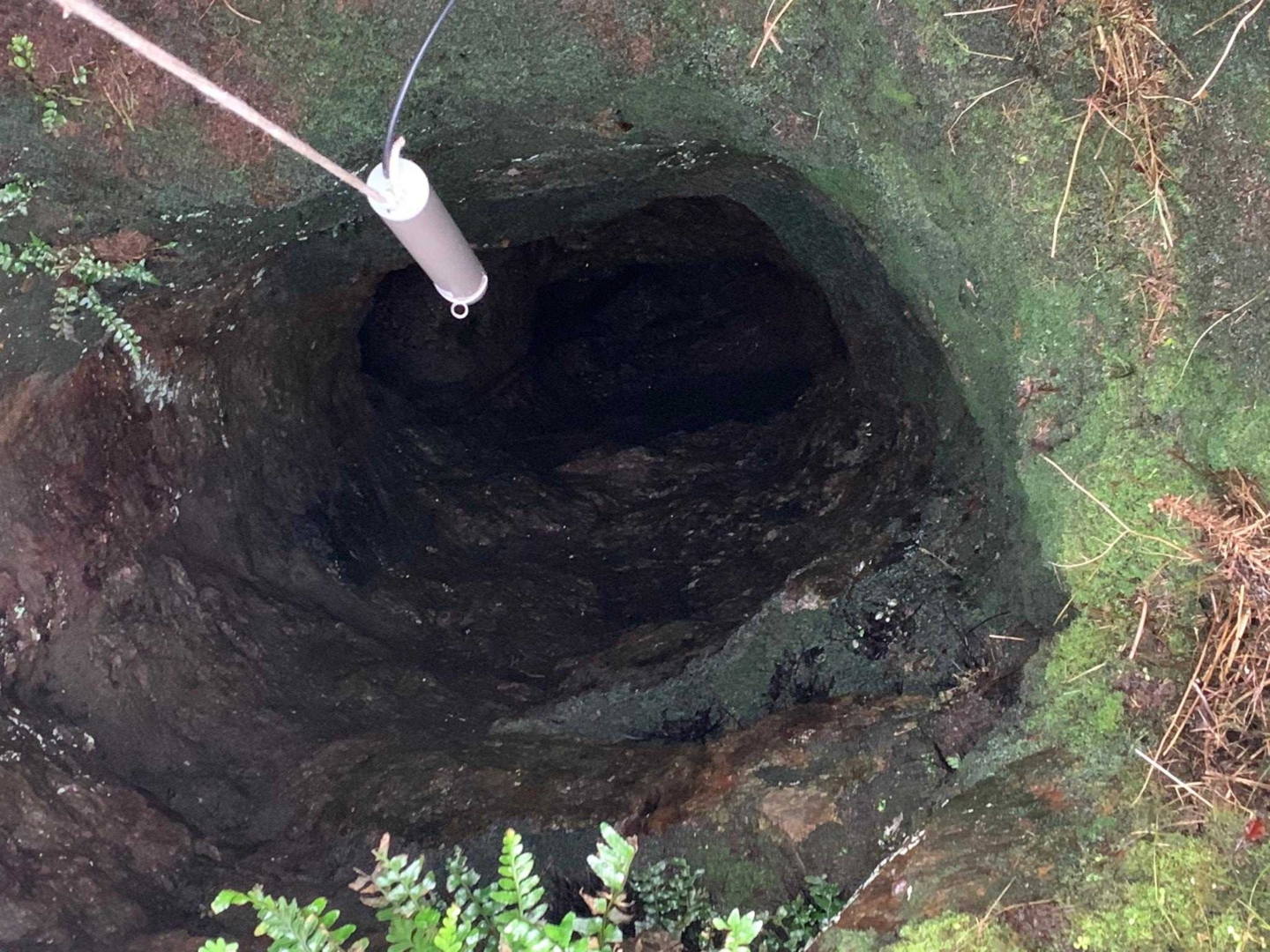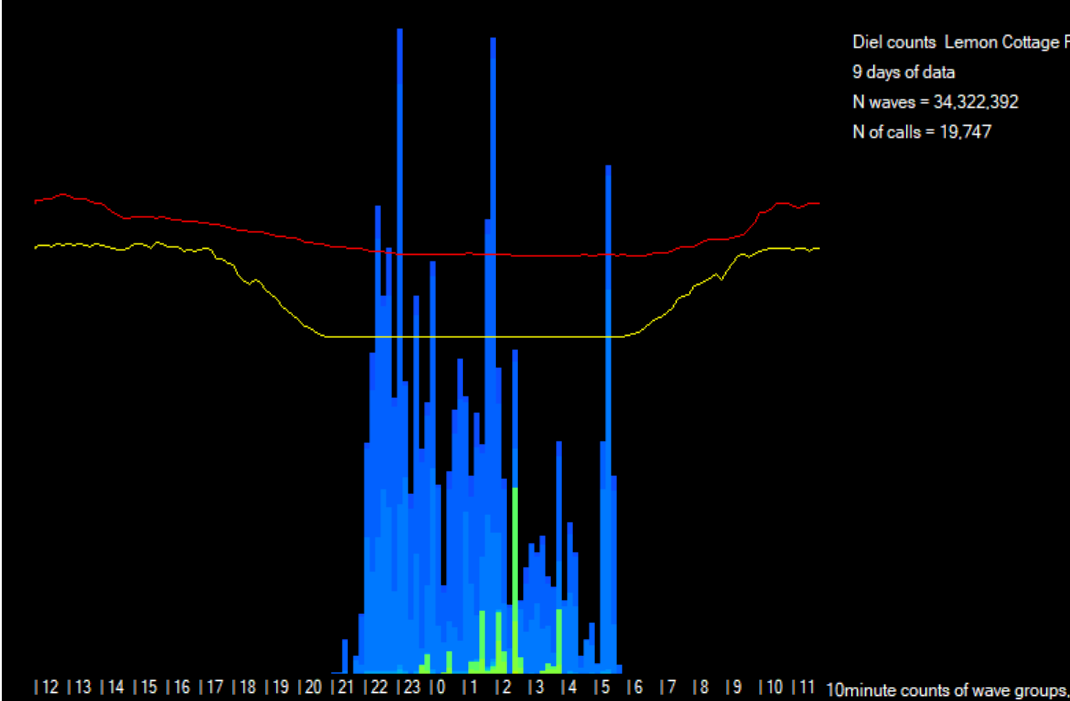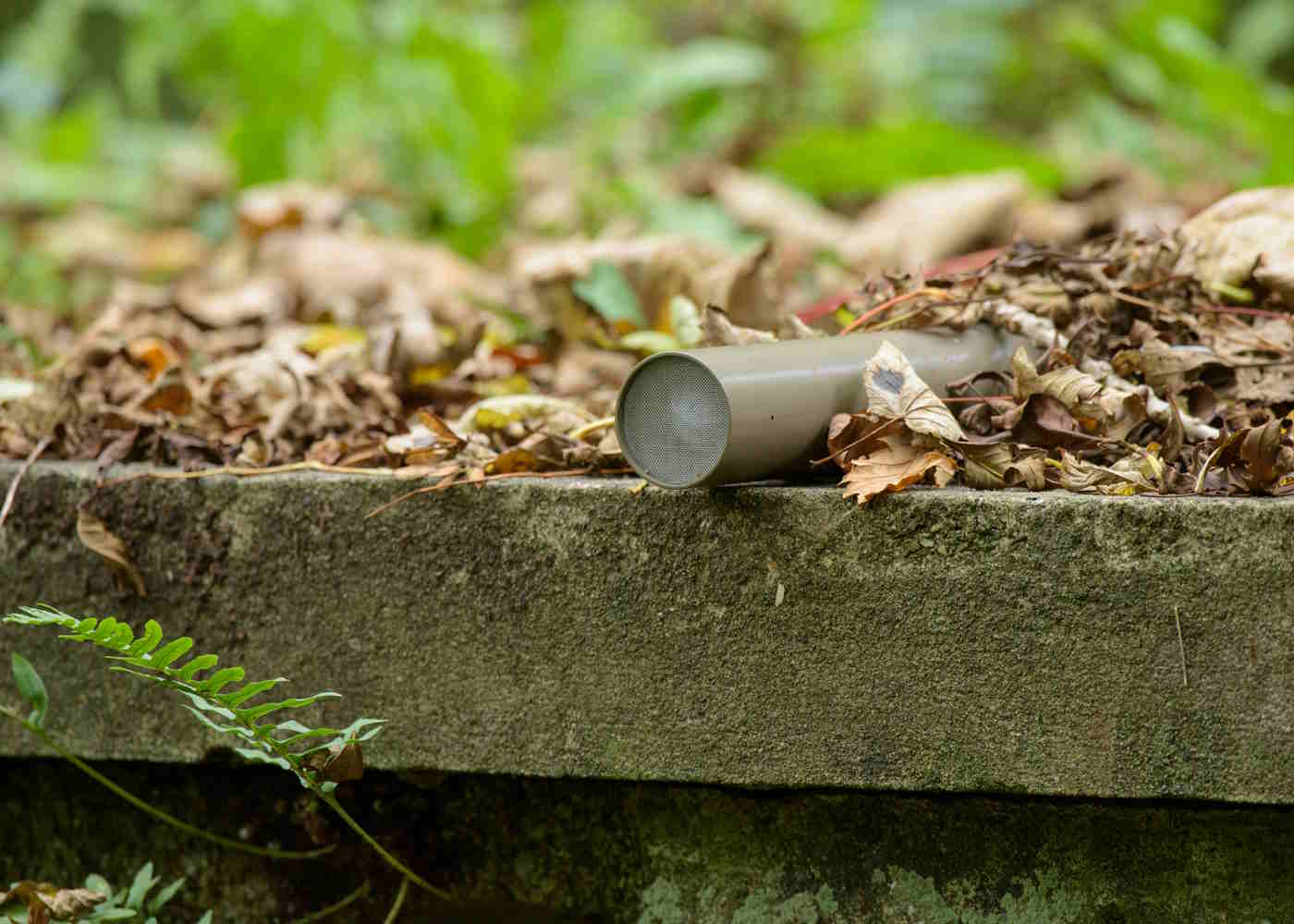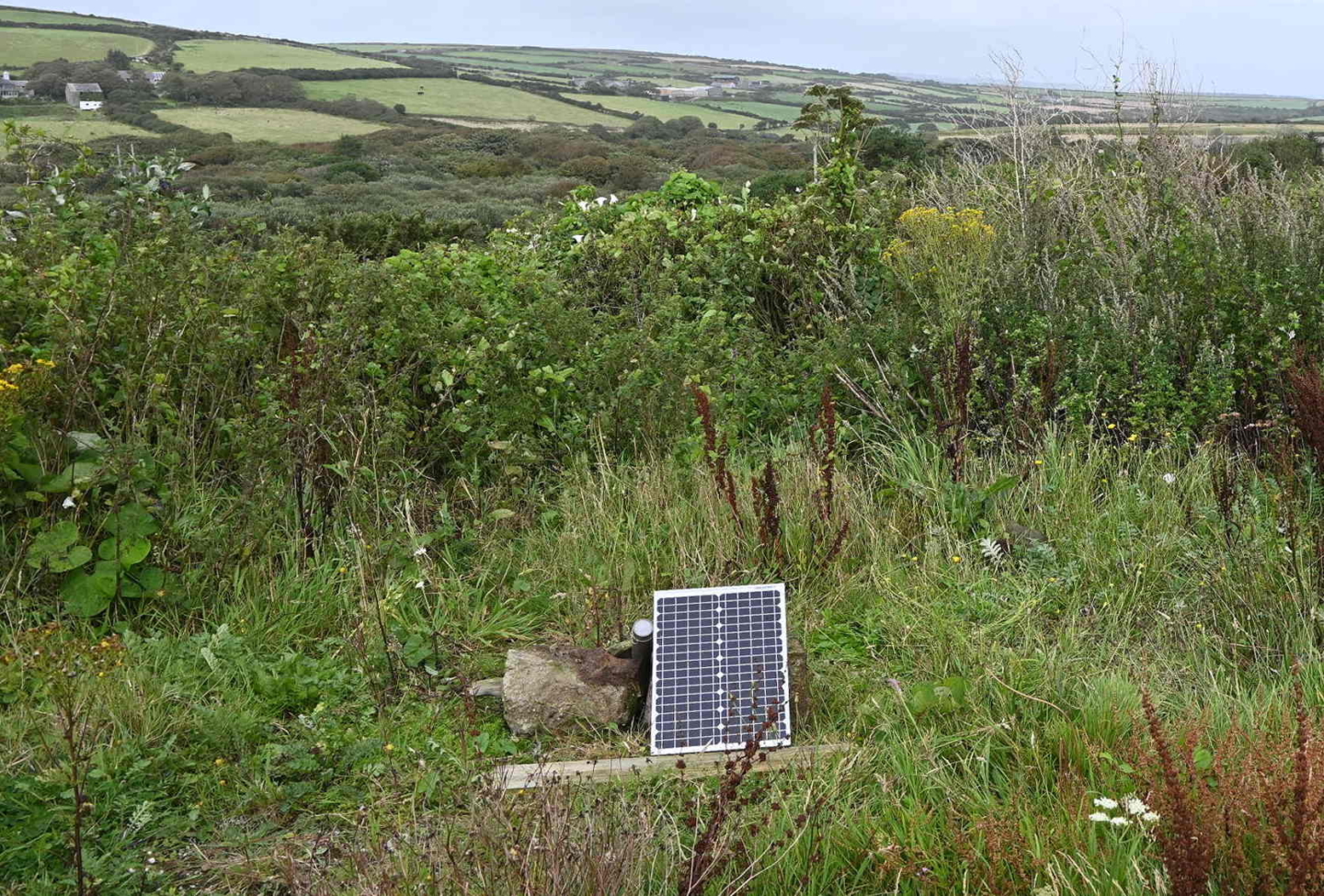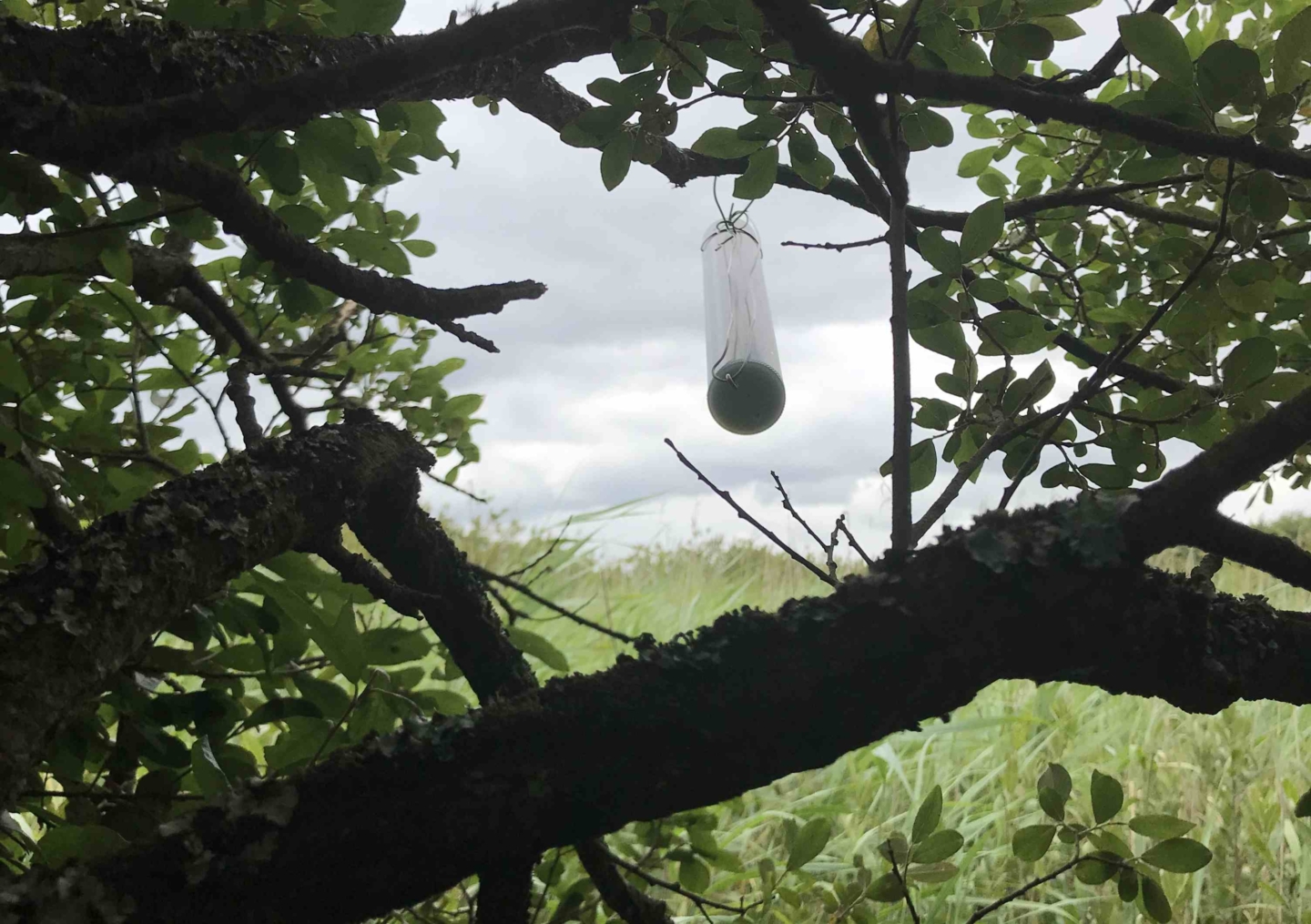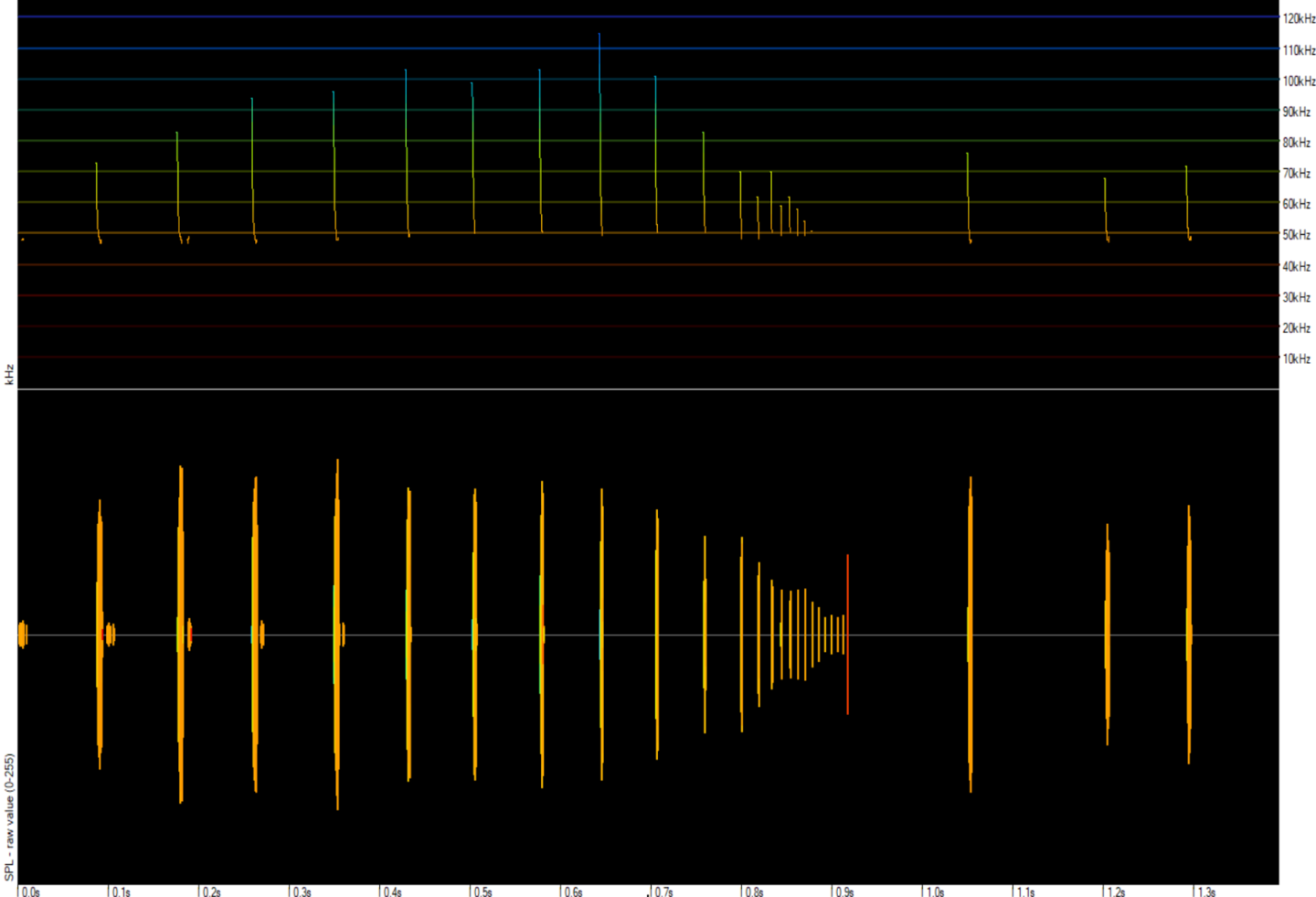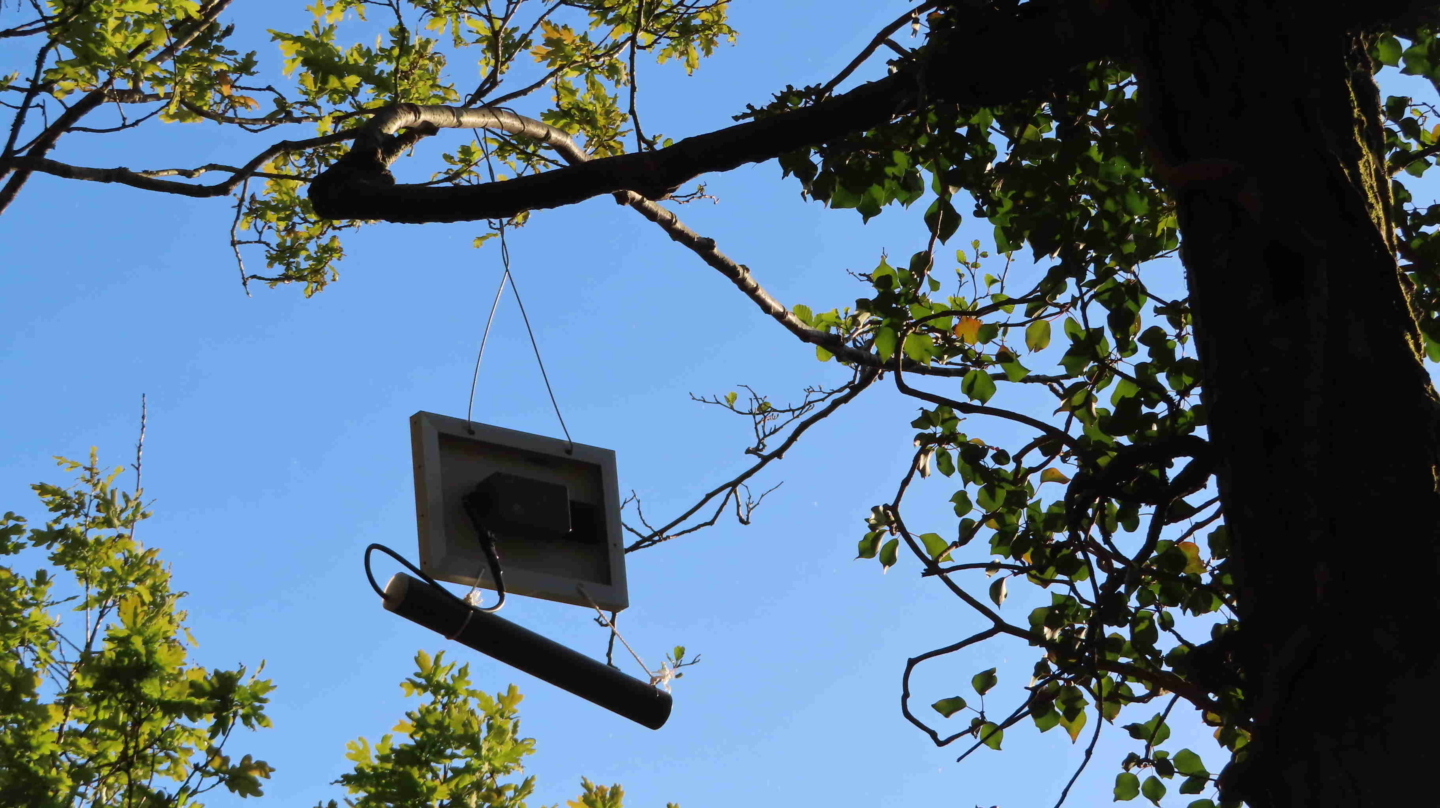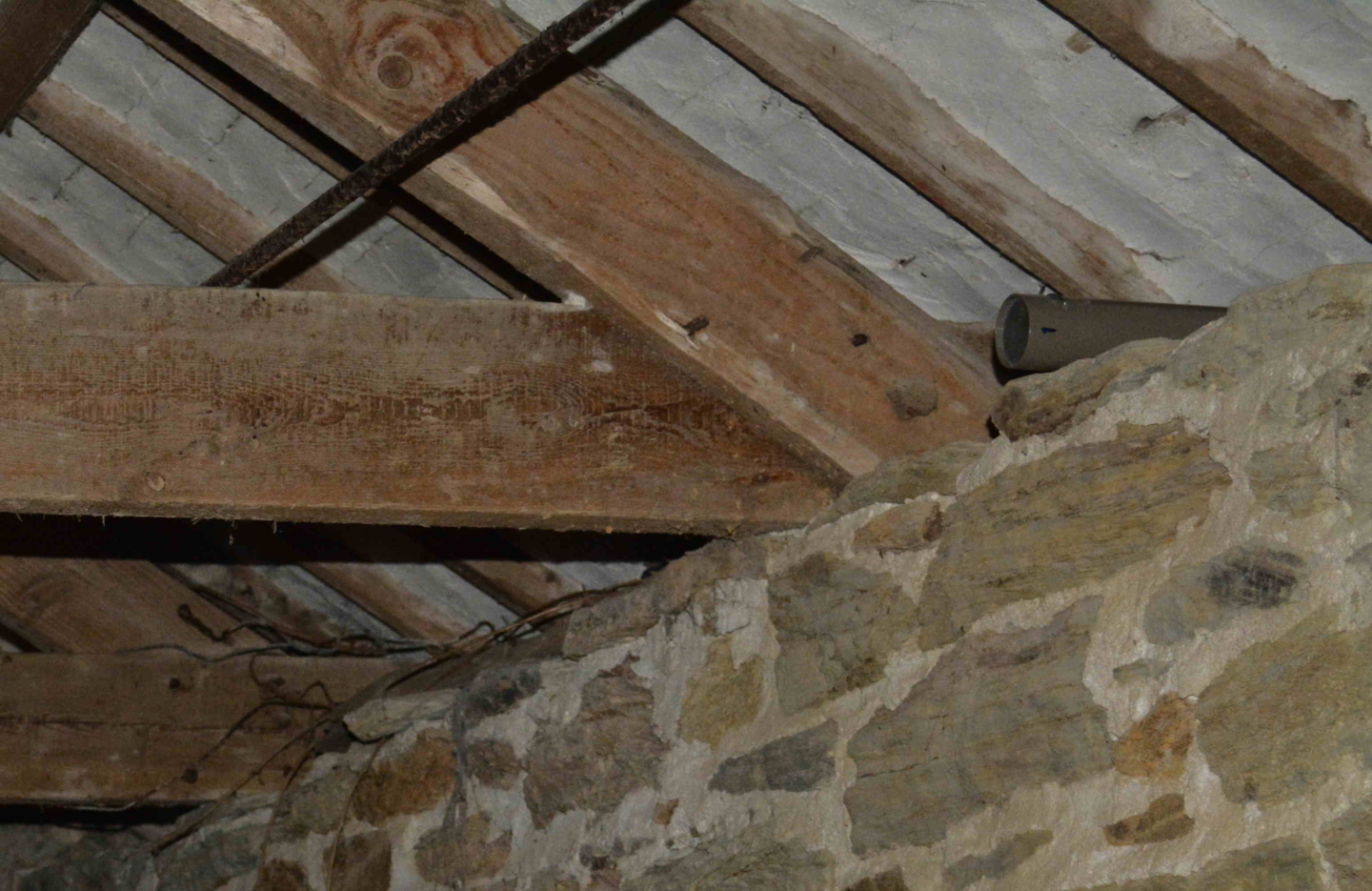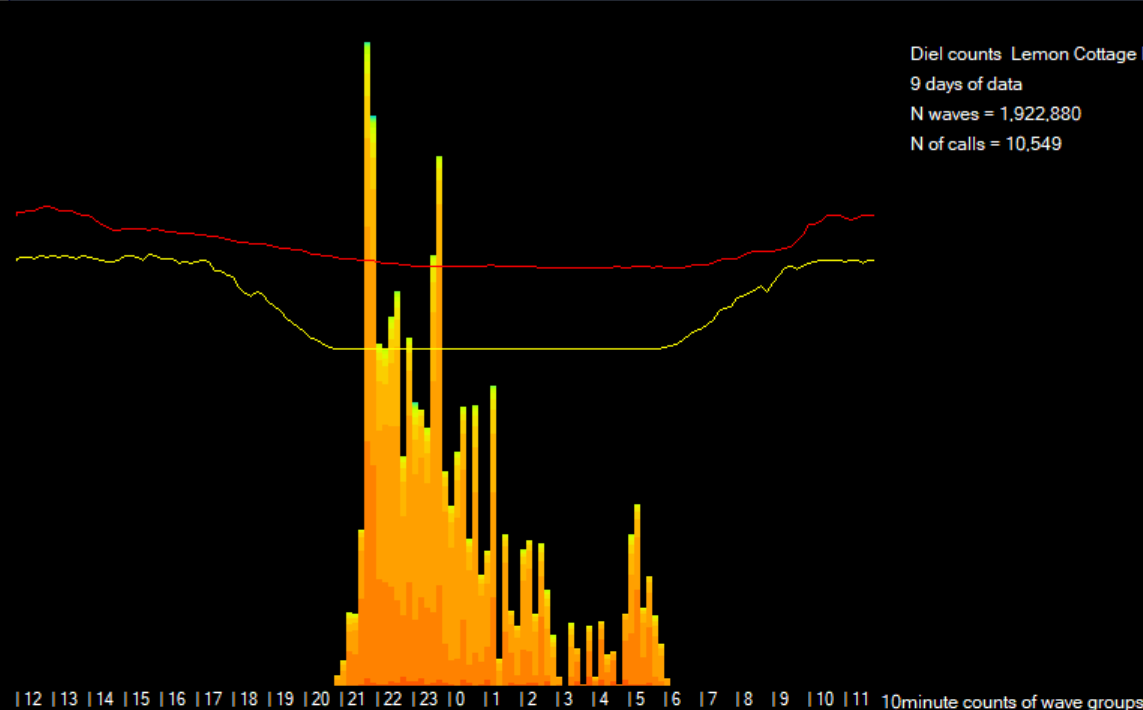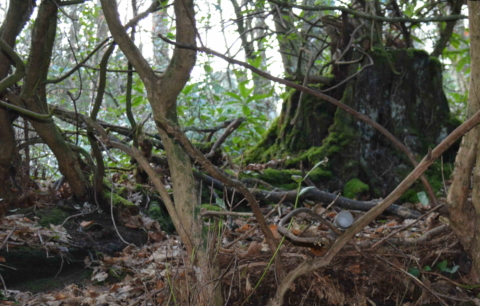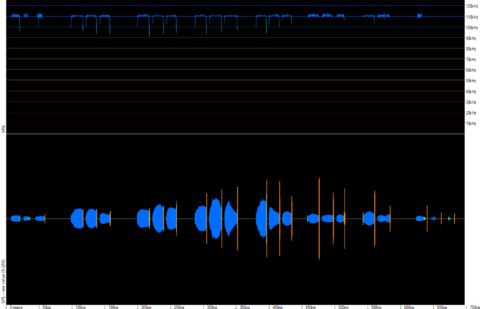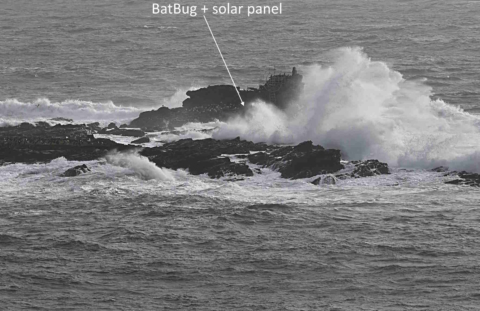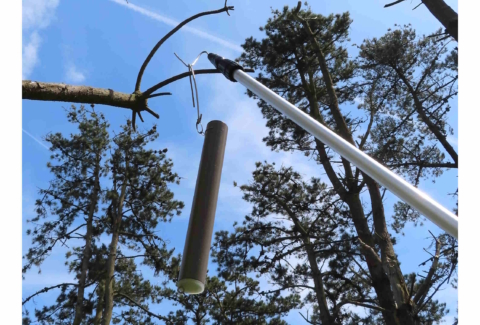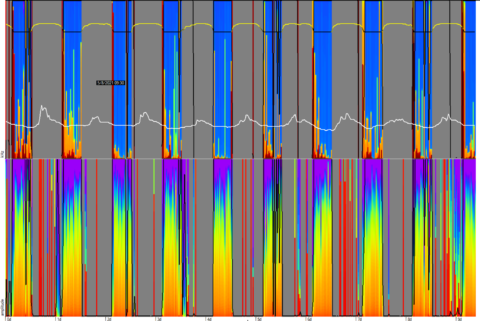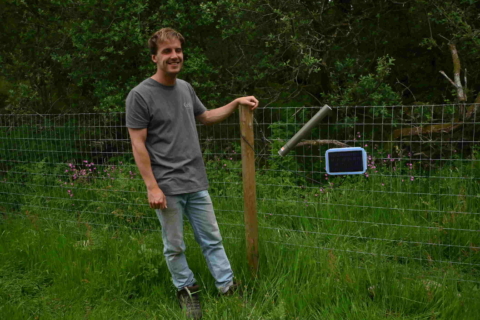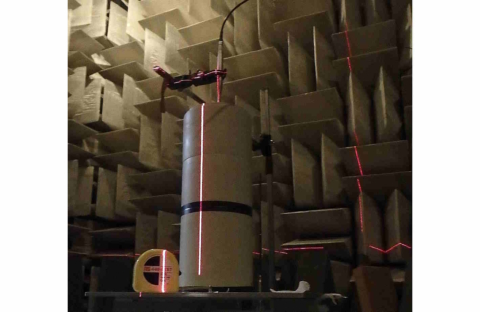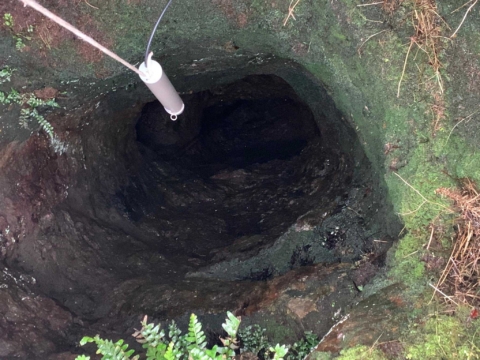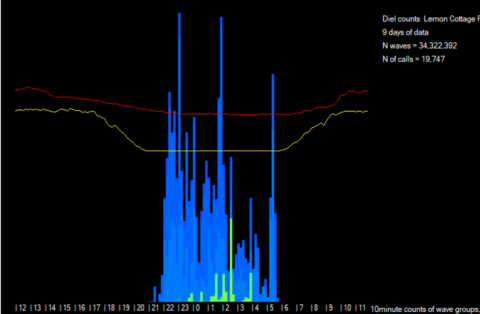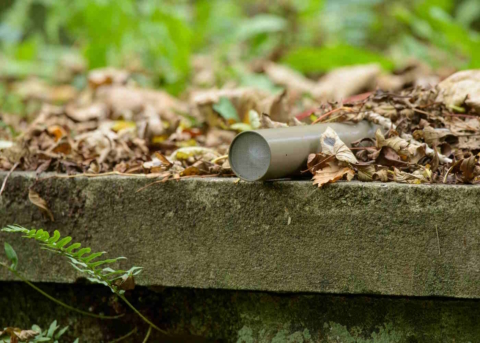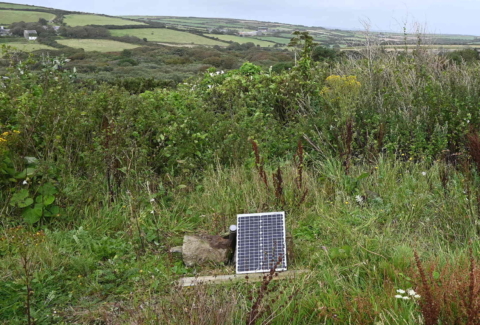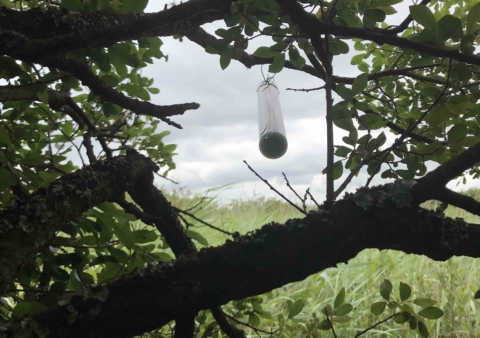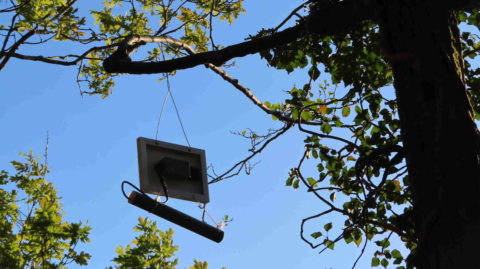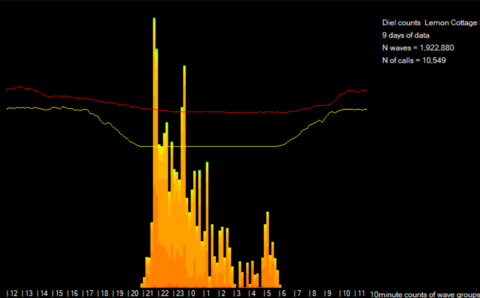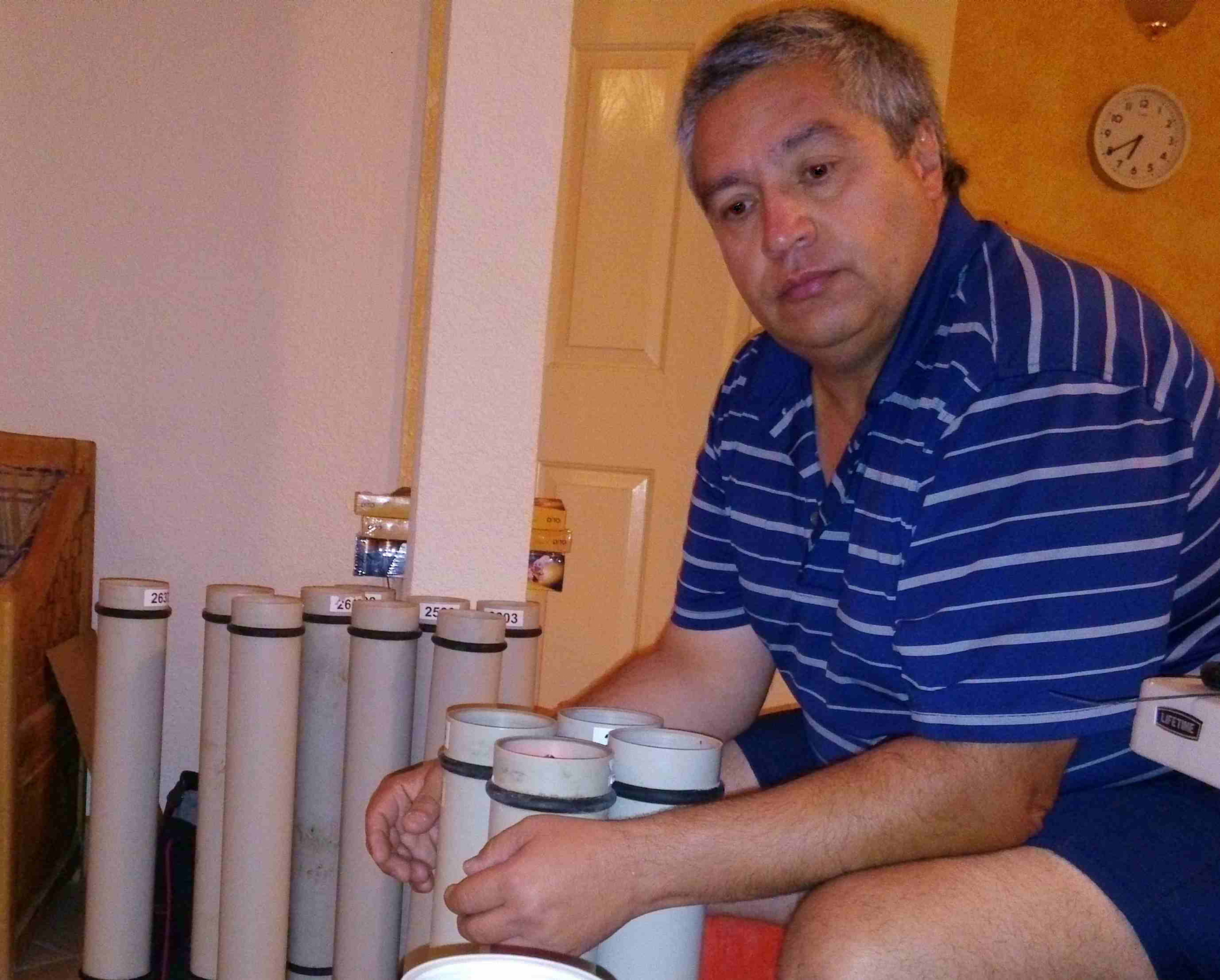
Armando Jaramillo-Legorreta
We are greatly saddened by the loss of Armando Jaramillo, a great pioneer, an indefatigable worker for the conservation of the Vaquita in Mexico, and a great friend.
Armando was the first person to demonstrate – as part of his PhD – that monitoring the echo-location of the Vaquita was showing a trend: a serious decline in its numbers. That work was a foundation in the development of acoustic monitoring which played a crucial role in driving conservation efforts. Hopefully that may still pull an amazing success from the jaws of defeat!
To develop effective monitoring Armando wrote his own software for visualising and analysing data from C-PODs and lead a team that became deeply skilled in identifying the echo-location of Vaquitas against a very difficult acoustic background. He worked on the problems of deployment, data handling etc and tackled all the problems that came up with extroadinary determination, and he was unstintingly helpful to his collaborators.
He will be greatly missed by all who worked with him.
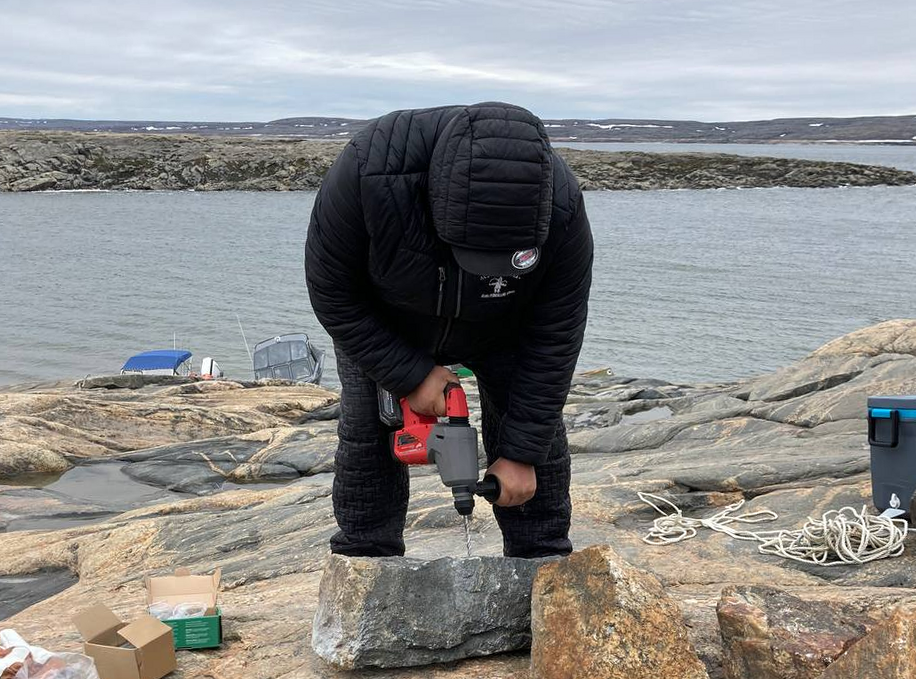
Inuit Beluga monitoring
Chelonia is proud to supply the acoustic monitors selected by the Inuit community in Ungava Bay, Nunavik, Canada to study the distribution and trend in numbers of the local belugas.
There is a long history of exploitation of the beluga for food by the indigenous human population and in this area.
More recently the Hudson Bay Company introduced commercial exploitation for oil, catching belugas using nets in the ‘whale rivers’ and harpoons and rendering the corpses in large boilers to extract oil. These activities occurred in both Hudson Bay and Ungava Bay and caused rapid population declines.
The Inuit community view is that current monitoring by infrequent aerial surveys by Canadian authorities lacks coverage and precision and they are consequently trialling F-PODs as means of obtaining more detailed information on the local beluga population – its distribution and trend in numbers.
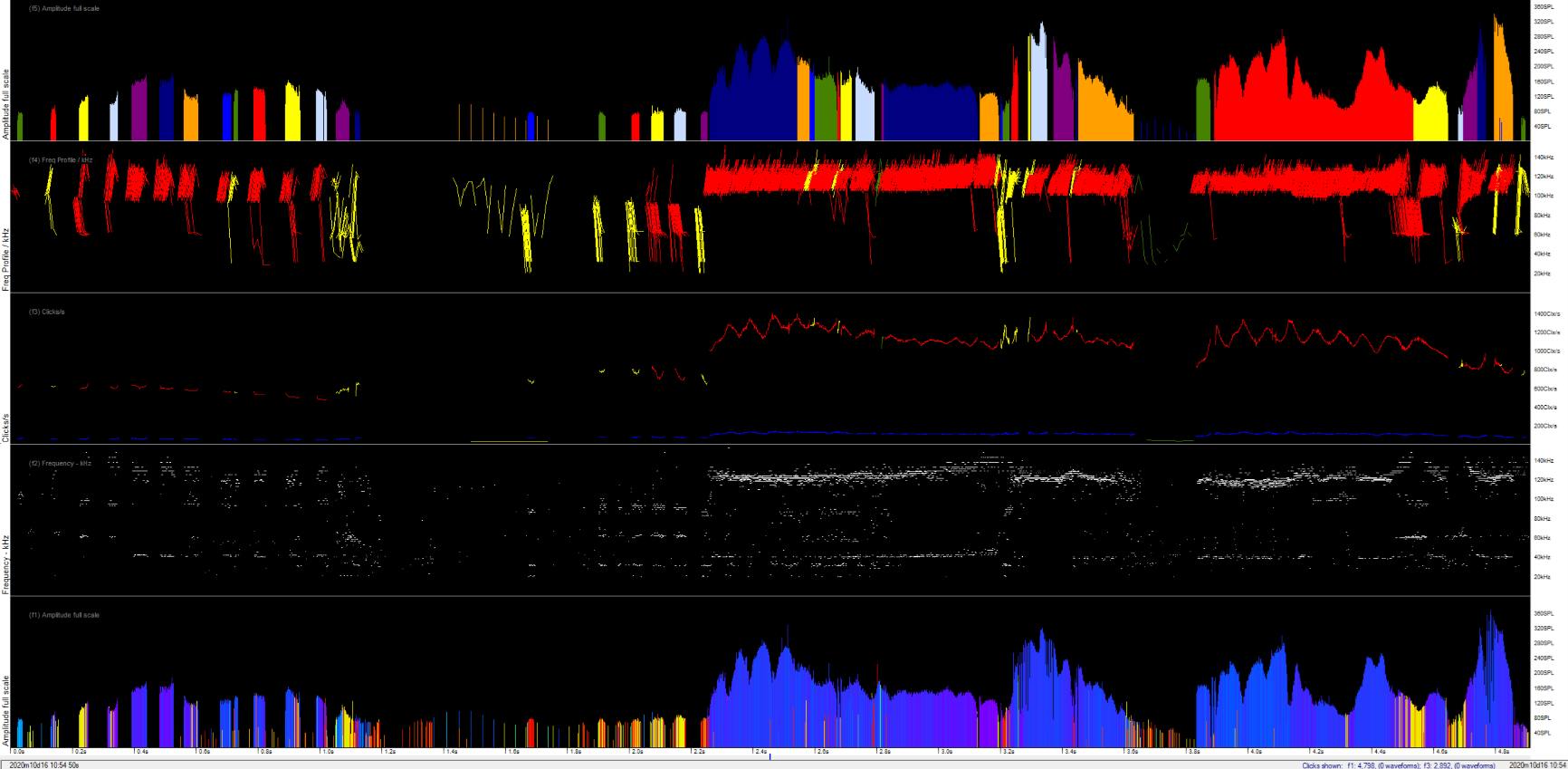
Boto social calls
F-PODs have shown that the click bursts of the Boto, Inia geofrennsis, consist of distinctive complex conserved click rate profiles.
These are mostly fast, sometimes very fast – 1800clicks/s – and evidently social in function.
So this species has switched from the lower frequency, omni-directional whistles used by marine dolphins from which they evovled, to highly directional higher frequency communication. This is of great biological interest!
Very low frequency ‘whistles’ have been described from this species, and there are numerous studies and reports of low frequency sounds from dolphins that sometimes mention that they are composed of clicks but rarely state two key acoustic aspects:
- Sampling fast ultrasonic clicks rather slowly and then using an FFT window that embraces subsequent clicks or echoes (possibly within the animal) will give low frequency ‘harmonics’ that are actually harmonics of the click rate, not of the click sound itself.
- The Boto, like other dolphins has very poor heariung at the described low frequencies, but very good hearing at the frequency(kHz) of the clicks, so it will be hearing the click rate profile that is shown in the F-POD data, not the low frequency ‘squawk’ or whatever it may have sounded like to a human ear.
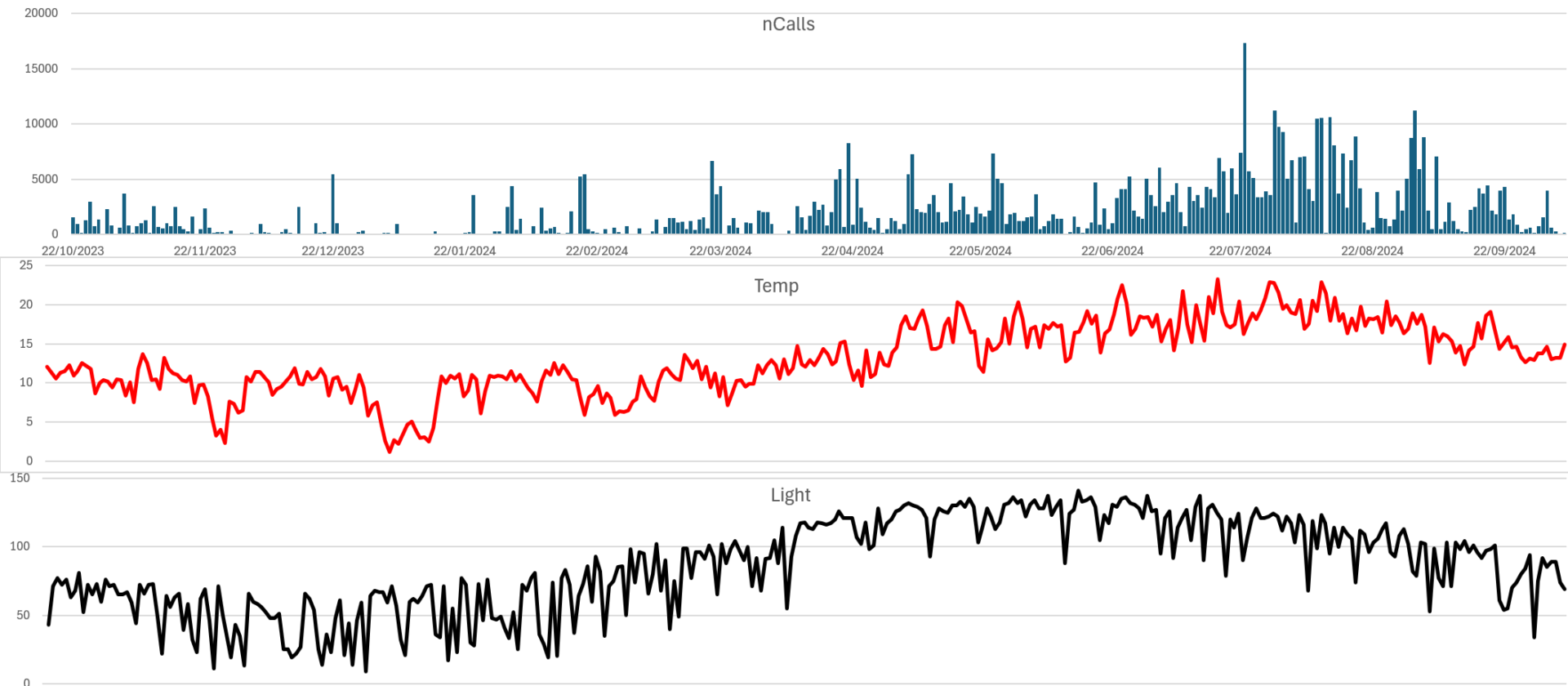
BatBug - one year of autonomous logging
These are Pipistrelle calls from a solar powered BatBug running for 350 days continuously on the front of a cottage in Cornwall, SW Britain.
The file size was approx 0.5GB. Total time to download, process, filter, export and display the data was less than 1 hour.
The Time period was 350 days from Oct 2023 to Oct 2024. Power was from a 10W solar panel wtih a lead acid back-up battery.
Lowest air temperature for a Pipistrelle flight detection was -1degC.
Longest period with no bat detections was 2 nights – 18 Jan and 19 Jan 2024
